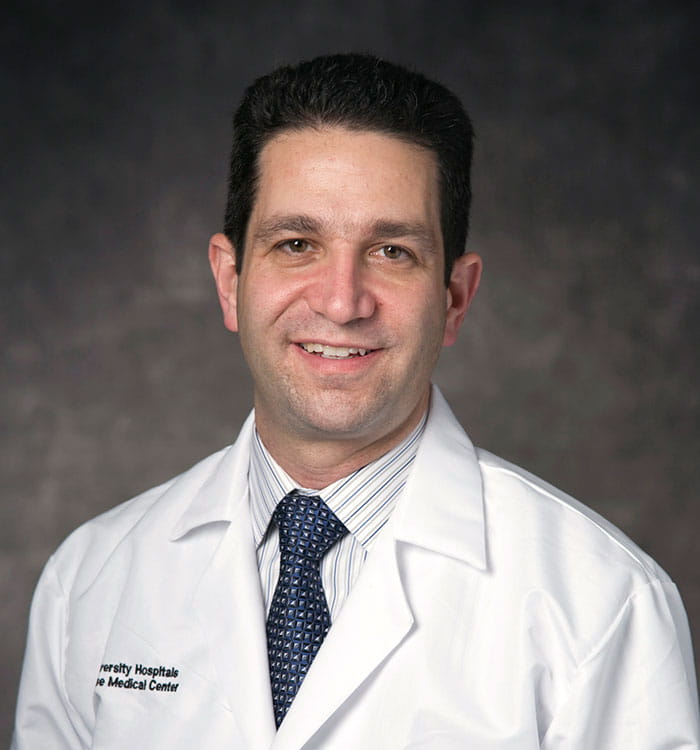A Trans-Pacific Partnership for UH
February 25, 2019
Interventional radiologist travels to China to teach physicians about selective internal radiation therapy for liver cancer
UH Clinical Update - February 2019In developing countries, many physicians learn about advanced techniques by reading articles, watching online lectures and enrolling in fellowships. But they are missing the human piece, the mentorship of experienced physicians who can train them firsthand.
Yearning for mentors, they look to organizations like the Society for Interventional Radiology (SIR) to provide that expert human connection. In this spirit, Jon Davidson, MD, FSIR, Program Director of Vascular Interventional Radiology at University Hospitals Cleveland Medical Center, volunteered to spend a week in China lecturing at hospitals on transarterial radiation therapy for liver cancer.
 Jon Davidson, MD, FSIR
Jon Davidson, MD, FSIRAs both a representative of UH and SIR, Dr. Davidson traveled to three hospitals in eastern China, lecturing on cutting-edge oncology work he practices at UH. The International Visiting Professor Program through the new SIR Giveback Project is designed to support educational visits to developing countries or lower-middle income regions.
“While China is still considered a developing country in this specialty, interventional radiology in China is growing at a rapid rate,” said Dr. Davidson, who also is the Fellowship Director for the Department of Interventional Radiology at UH Cleveland Medical Center. “Much of our research and many of our innovations are now coming from China.”
Dr. Davidson focused his lectures to attending physicians, fellows, resident physicians and medical students on interventional oncology, specifically transarterial radioembolization (Y90) for liver tumors. Y90 was FDA approved in 2002 and until now had not been offered in mainland China.
In his visits to hospitals in Shanghai, Nanjing, and Lishiu, Dr. Davidson explained radioembolization, a minimally invasive procedure that combines embolization and radiation therapy to treat liver cancer. Tiny beads filled with the radioactive isotope yttrium Y-90 are placed inside the blood vessels that feed a tumor, blocking the blood supply to the cancer cells and delivering a high dose of radiation to the tumor while sparing normal tissue.
Y90 is primarily used to treat primary and secondary metastatic liver tumors. UH does about 50 cases per year to extend life, and in some cases prepare a patient for a liver transplant.
“This was an incredibly rewarding and engaging trip to China, on behalf of the Society of Interventional Radiology, promoting international collaboration,” said Dr. Davidson, who also was asked to collaborate on and revise several Chinese scientific manuscripts. “My experience was very eye-opening, as I witnessed many innovations that they were engaged in also. I felt extremely honored to represent UH in China! I had the opportunity to meet and exchange ideas with Dr. Gao-Jun Teng, one of the most prominent and influential interventional radiologists in Asia.”
Tags: Liver Cancer, Medical Education


